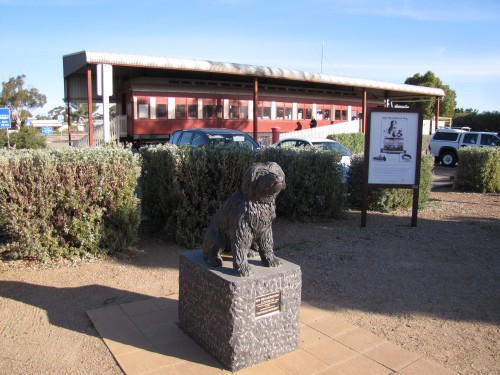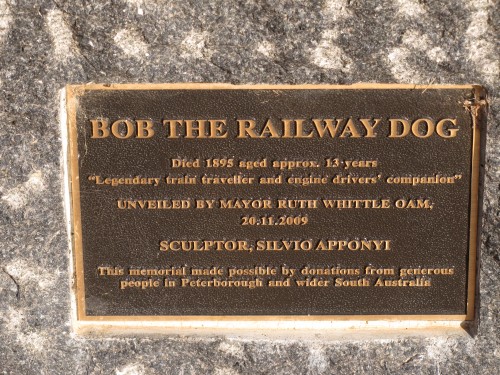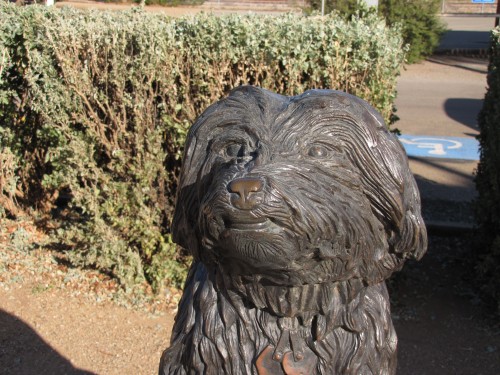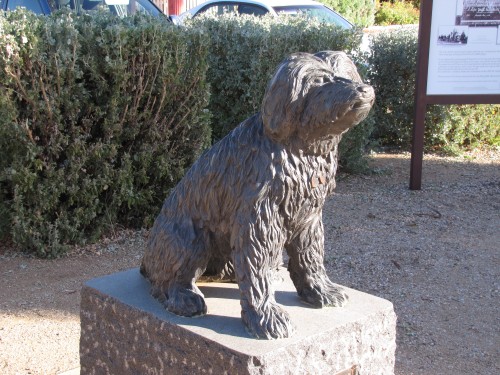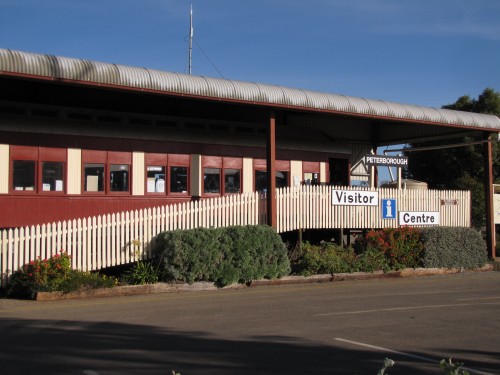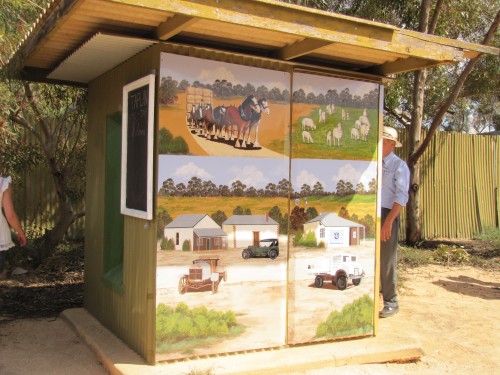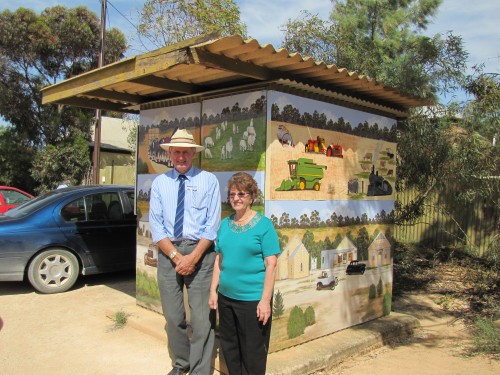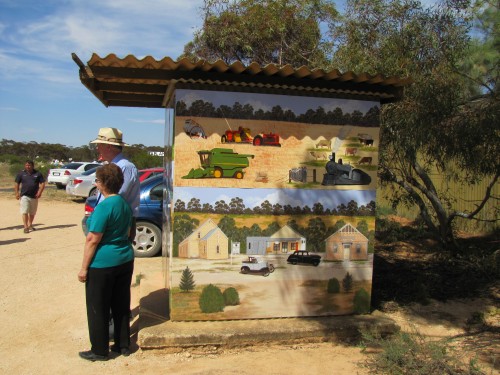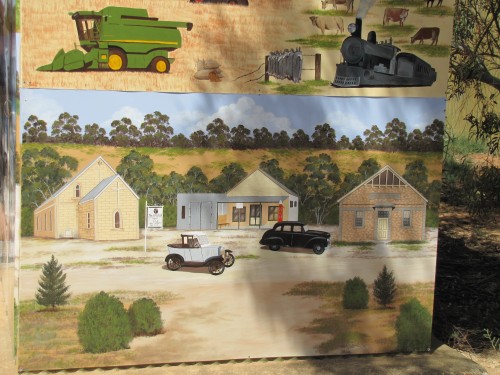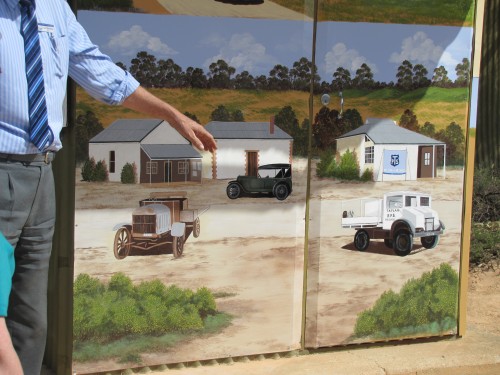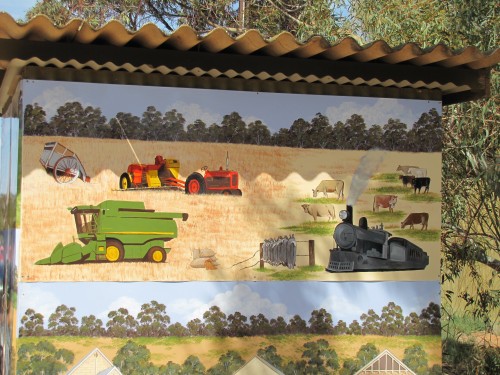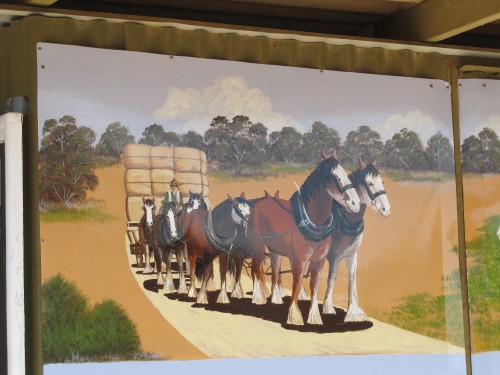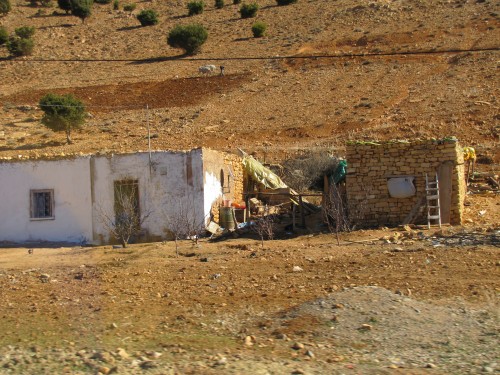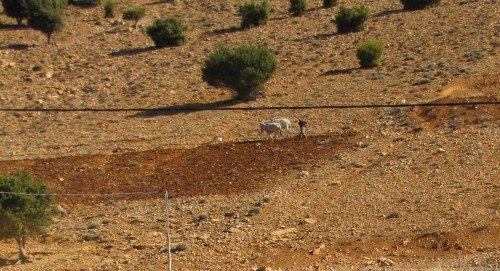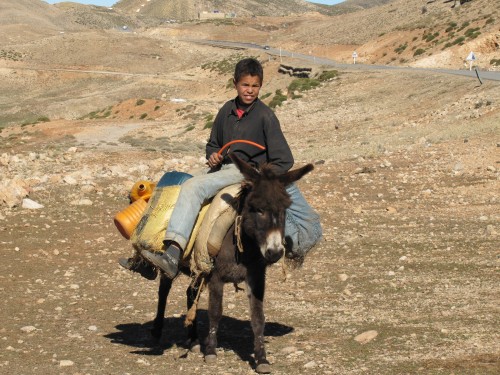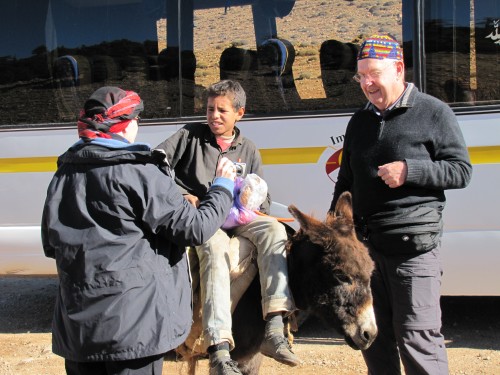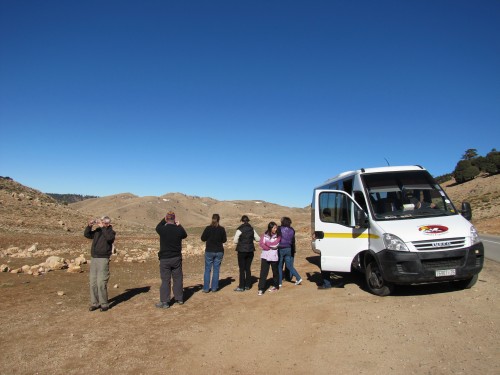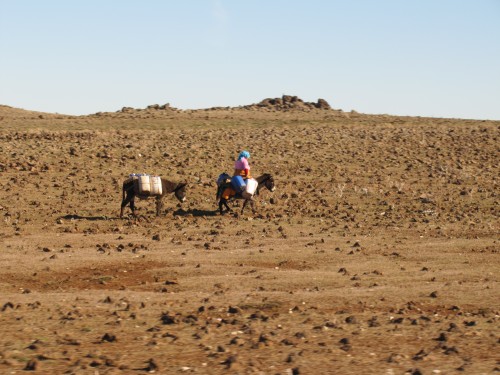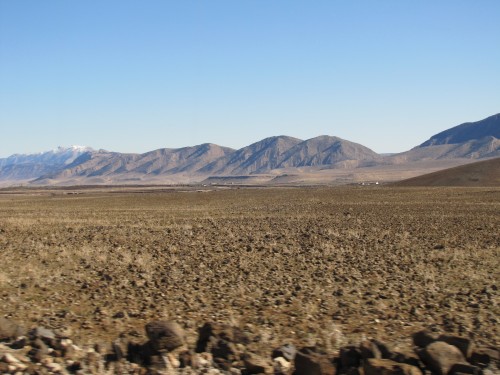Bob the Railway Dog, Peterborough
The wonderful story of Bob the Railway Dog is one of those quirky stories you come across frequently throughout Australia. This statue of Bob stands outside the Visitor Centre in Peterborough in the mid-north of South Australia. Back in the late 1800s Bob was a frequent traveller on the old steam trains travelling between Peterborough and other towns along the various lines leading out from Peterborough.
Bob has been recorded as travelling to Adelaide, Broken Hill and Port Pirie and other towns on the railway lines on many occasions. There is some thought that he even made it as far as Kalgoorlie in Western Australia on one adventure, and this site claims he ventured even further afield. He was also the friend of many local people and more than once had amazing adventures. The Visitor Centre sells a very interesting and readable book about Bob (or it can be bought online).
Further reading:
Taplan mural paintings
As a part of the Taplan Railway Centenary celebrations in 2013 there was special mention made of the new murals painted on the telephone exchange building. This small structure, shown in today’s series of photos taken on the day, replaced the old manual telephone exchange in the nearby post office many years ago. This building also doubles as a mail centre, the letters being sorted regularly into a handful of post office boxes in the side of it.
When I was growing up in the 1950s and 60s I would walk past this spot twice every day on my way to and from school a few hundred metres away. Behind this modern structure is the old post office where I would stop every day on my way home to collect the mail from a window, behind which the post master sat. His job every day would be to sort the few dozen letters addressed to residents in the area. He also manned the manual telephone exchange, connecting incoming calls to the number being called.
The phones in the homes of the district were typical of many used throughout rural Australia of that era. A bulky wooden cabinet hung on the wall in our dining room, with a large mouthpiece and a cord attached to an earpiece. When there was an incoming call, the phone would ring loudly and to answer one picked up the ear piece from its cradle and spoke into the mouthpiece. The person manning the exchange then connected the caller. To make a call one would pick up the earpiece and turn a handle, alerting the person in the exchange that you wanted to make a call, which they then connected for you. My parents would be astounded by the modern mobile phone and the many things one can do on one.
In the photos below I have show the new murals from different angles. One photo shows the artist and the Mayor of Loxton Waikerie who declared the murals open. The paintings, based on local scenes and local farming equipment down through the years, show typical scenarios of life in the Taplan region.
Subsistence Farming in Morocco
Simple homes like the one shown above are a common sight in the poorer parts of rural Morocco. At this point we were still travelling through the Atlas Mountains south east of Fes. As you can see in the picture, the terrain is very rocky all around. This means that there is no shortage of building materials – cheap, handy, easy to use and effective. Interestingly, the farmer is in the process of improving the look of the house by applying what looks like a form of whitewash to the walls.
Despite the remote location of this farm I notice that they do have a supply of electricity. I also note the satellite dish on the right hand side wall. In some of the towns such dishes could be seen in their hundreds, sometimes dozens on one apartment building alone. If you look carefully you can see the farmer ploughing the ground up the hill behind the house (see enlarged photo below). I have no idea what he was intending to grow. This was the middle of winter so he was getting ready for planting something in the early spring perhaps.
I noticed very few tractors in the poorer rural areas of Morocco. Donkey power was common, however, and this farmer was also using a donkey coupled with what looks like a mule.
An encounter with a local in Morocco
At one point as we were traversing the Atlas Mountains our guide asked our driver to stop on the side of the road so that we could get out and take a few photos of the scenery. As soon as we stopped one of the local boys rode quickly up to us on his donkey. Because he had a number of large plastic containers strapped to his animal, I assumed he was on his way to fetch some water for his family.
It turned out that he an entrepreneurial streak in his character. As soon as he arrived he insisted on being paid so that we could take his photo. I think some of the touring party obliged. We also gave him some dates we had bought the day before.
Life can be hard in Morocco
While the cities and many of the towns of Morocco are modern and vibrant like we’d expect, rural Morocco in some parts has little in the way of modern facilities and infrastructure. While most of the country has a good supply of water and power, not everyone enjoys these amenities.
As we were travelling along south east of Fes I photographed this women heading off across a desolate landscape to collect water. Her two donkeys are festooned with water bottles for her to collect her daily supply. I have no idea how far she had to ride to get her water, but I did notice public wells or bores at intervals along the highway on which we travelled.
